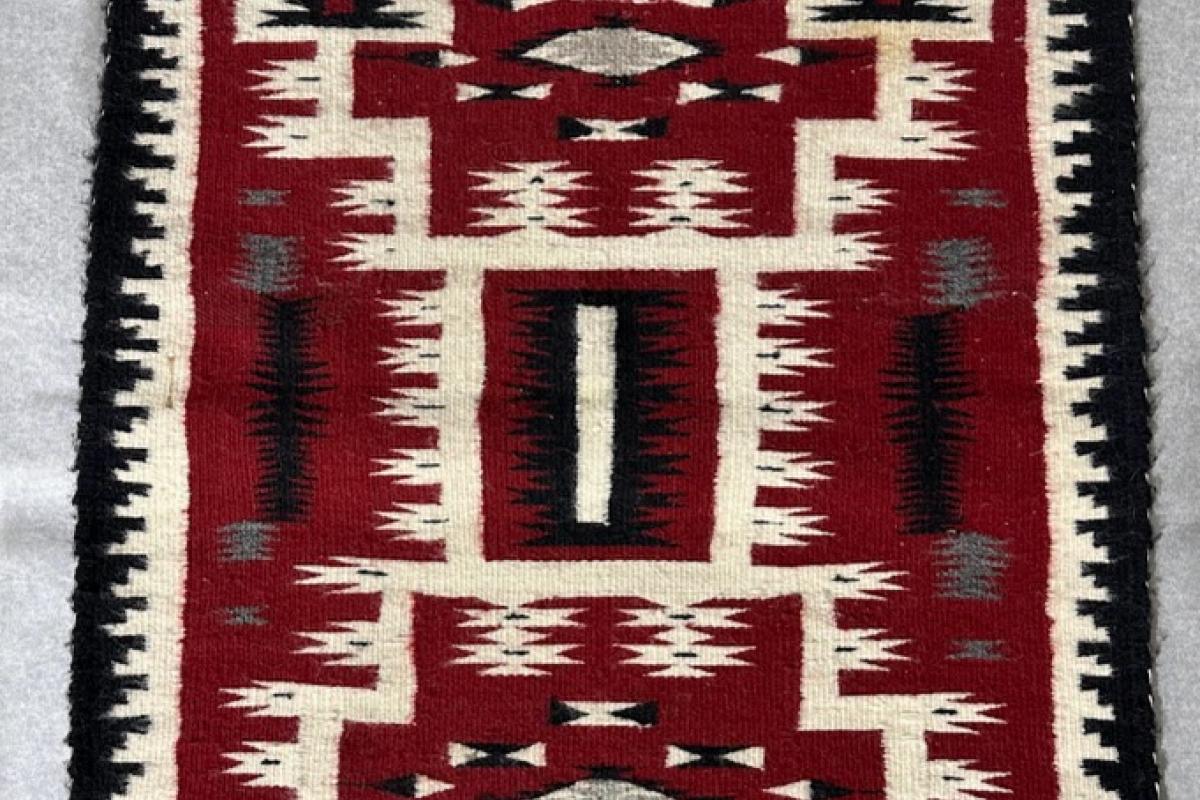An Exhibition of Works from The Art Center’s Permanent Collection
December 1, 2023- January 26, 2024
Sponsored by Bill and Julie Milius
Opening reception Friday, December 1, 2023, 6:30-9pm
According to their creation stories, the Navajo People (the Diné) learned to weave from Spider Woman. She introduced the Diné to the loom and explained to the People that the cross poles were part of the sky and the supporting cords were of the earth. The warp (the vertical strings) were sun rays, while the weft (the horizontal yarns) were products of the earth climbing to the sky.
History records that the Pueblo People taught the Diné to weave after they migrated into the Four Corners Region. The Diné originally wove with cotton like the Pueblo but soon started using wool from Churro sheep, which the Spanish introduced. The Diné became famous throughout what is now the American Southwest for the high quality of their weavings.
The Diné world was turned upside down after their defeat in Cañon de Chelly at the hands of the U.S. Army under the command of Kit Carson in 1863 and their subsequent exile to Bosque Redondo in eastern New Mexico.
The journey to what became a failed reservation is known as the infamous Long Walk. In 1868, the Diné people returned to their homeland in the Four Corners area.
The U.S. army had killed the Diné's herds, so they restarted their weaving customs with sheep provided by the government.
Traders soon discovered the potential commercial value of Diné weavings. They specifically marketed them to tourists and buyers back East. These traders started persuading their weavers to make distinctive patterns that became associated with that particular trading post. This was the creation of what became known as the Navajo Regional Patterns.
The two Regional Patterns exhibited in this show include Two Grey Hills and Ganado. The Two Grey Hills pattern started around 1900. Two traders, Ed Davies from Two Grey Hills and George Bloomfield from Toadlena, adopted some images from an earlier style started by trader J.B. Moore. But instead of dyed yarn, they encouraged the use of natural brown, grey, white, and black colored wool. The Two Grey Hills weaving also became famous for creating the "Tapestry" quality weaving (over 80 weft threads to the inch).
Meanwhile, the Ganado weaving style started in the 1930s as a revival of the earlier Hubbell pattern, which trader Lorenzo Hubbell had influenced. These weavings favored red and often featured a central motif and intricate geometric double or triple borders with diamond designs.
Also, as part of the exhibition, some exciting work from “The Rug Makers” program will be on display. This was a cooperative project between The Art Center of Western Colorado and Mesa Valley County School District 51 in April 1990. Weavers Gladys Miller and David Garrett went to local elementary schools and parochial schools, demonstrating how weavings and the designs were made. Displayed here are some of the designs created by students from kindergarten to fifth grade who are now in their 40s. Is your artwork there?

